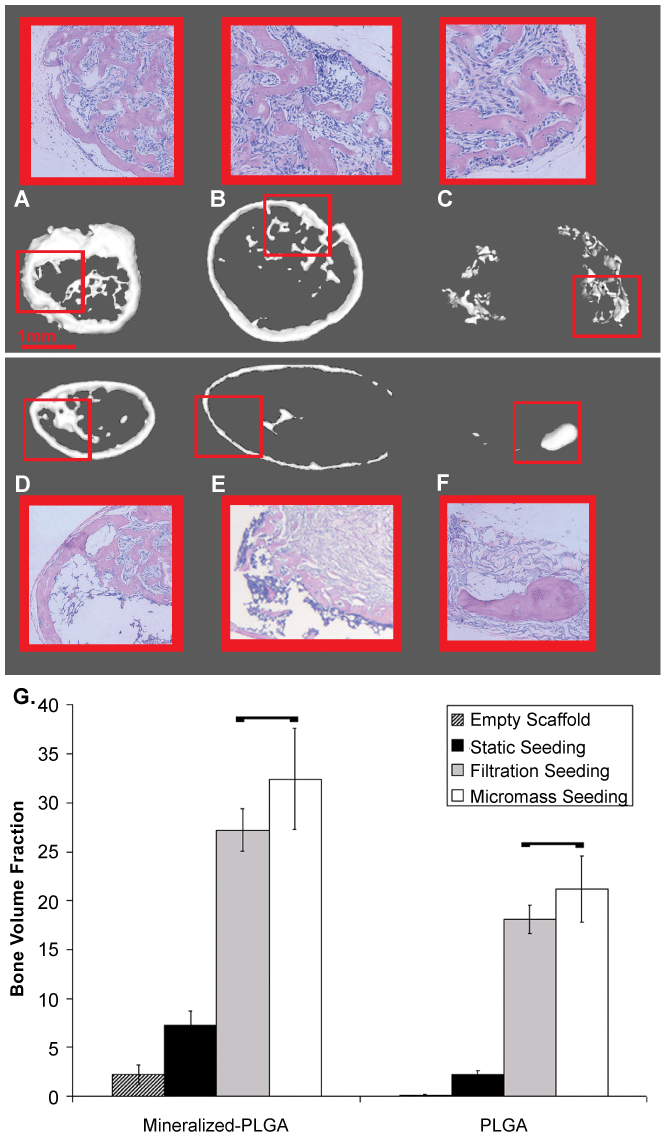
 |
| Figure 5: Volume fractions and patterns of osteogenesis vary as a function of scaffold surface and seeding techniques. Macromass seeded scaffolds produce smaller ossicles, with a more abundant mineralization in the core of the scaffold (A, D). Filtered scaffolds (B, E) show a larger shell of bone formation with little or no mineralization in the core of the scaffold in both CT renderings and H&E histological sections. Static seeded scaffolds produce scant mineralization and bone formation (C, F). Mineralization enhances mineral coverage and BVF in all groups. These significant differences as a function of surface material and initial seedingwere quantified (G). Both the micromass and filtration seeding yielded significantly larger BVF than static seeding (p<0.001). Although there was no significant difference between the filtration and macromass seeding, the variability is 2-fold greater in the macromass implants. Mineralized scaffolds showed a significantly higher BVF with all seeding techniques than did their PLGA counterpart (p(micromass)0.037, p(filtration)=0.013, p(static)=0.009). Bars indicate groups that are not significantly different. |